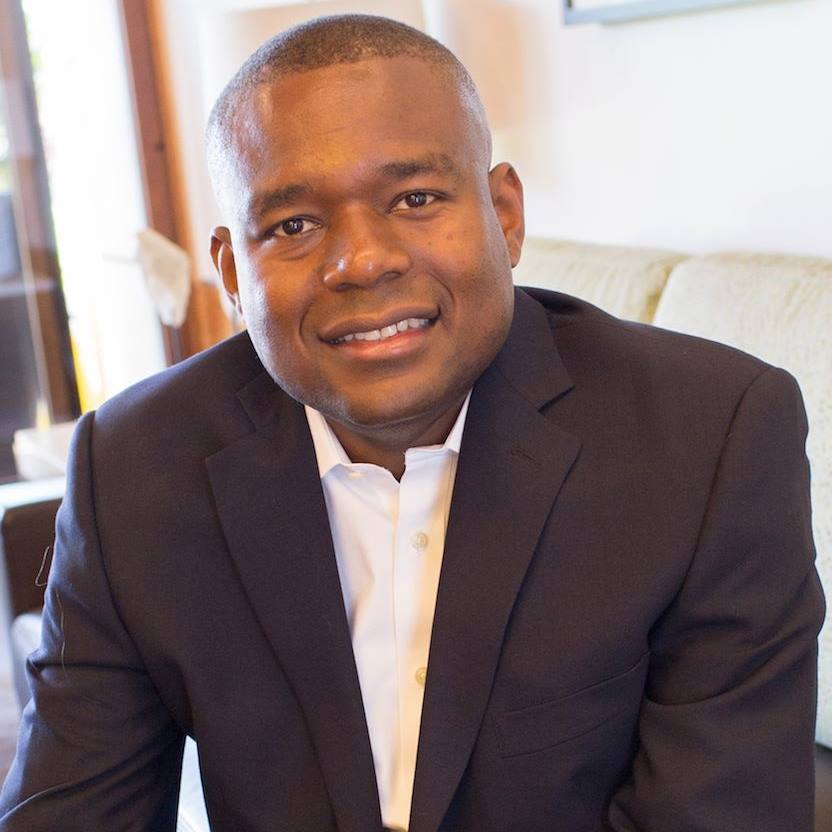You've prepared thoroughly for your meeting with the CEO. You've got detailed slides, comprehensive data, and a well-rehearsed presentation. Five minutes in, your executive is checking their phone. Ten minutes later, they interrupt with a question that tells you they've missed your entire point. The meeting ends with no clear decision, and you walk away frustrated, wondering what went wrong.
Sound familiar? You've just experienced the challenge of managing up—the art of communicating effectively with senior executives. It's a skill that can make or break your career, yet it's rarely taught explicitly. Today, we're going to change that.
Managing up isn't about manipulation or office politics. It's about understanding how senior leaders think, what they need from you, and how to deliver information in a way that enables them to make better decisions faster. Master this skill, and you'll not only advance your own career but also become infinitely more valuable to your organization.
Understanding the Executive Mindset
Before you can communicate effectively with senior executives, you need to understand what makes them different from other stakeholders you work with. It's not about intelligence or capability—it's about context, constraints, and priorities.
Senior executives operate under crushing time pressure. A typical CEO might have back-to-back meetings from 7 AM to 7 PM, dozens of critical decisions to make daily, and hundreds of emails demanding their attention. When you have 30 minutes on their calendar, you're competing with everything else vying for their mental bandwidth.
Executives also operate at a different altitude. While you might be deeply immersed in the tactical details of your project, they're thinking about organizational strategy, market positioning, board relations, and how your project fits into a dozen other initiatives. They need to zoom out where you zoom in.
Perhaps most importantly, executives are wired for decision-making, not information consumption. They don't want to know everything you know—they want to know what they need to know to make an informed decision or take appropriate action. Every piece of information you share should pass the "so what?" test: So what does this mean for the business? So what should we do about it? So what happens if we don't act?
Understanding this context completely transforms how you communicate. Your job isn't to demonstrate how hard you've worked or how much you know. Your job is to make their job easier by delivering the right information in the right format at the right time.
The Bottom-Line-Up-Front (BLUF) Method
Military briefings use a technique called BLUF: Bottom Line Up Front. The most important information comes first, immediately, without preamble. This approach is gold for executive communication.
Start every communication with the headline. Don't build suspense. Don't provide backstory. Don't explain your methodology before sharing your findings. Lead with what matters most.
Instead of: "Over the past three months, our team has been conducting extensive market research, interviewing 47 customers across 12 industries, analyzing competitive positioning, and reviewing our pricing model against industry benchmarks. We've created a comprehensive database of findings and have several interesting observations to share."
Try this: "We should increase our pricing by 15 percent. Our research shows we're significantly underpriced, customers view low pricing as a quality signal problem, and competitors are charging 20-30 percent more for similar solutions. I recommend we implement this change by Q2, which would add approximately $2.3 million in annual revenue."
Notice the difference? The second approach immediately tells the executive what they need to know: the recommendation, the rationale, and the expected impact. If they want to dive deeper into your methodology or findings, they'll ask. But you've respected their time by giving them the decision-critical information first.
This approach feels unnatural to many people. We're taught to build arguments carefully, laying foundations before reaching conclusions. That works for academic papers. It fails in the executive suite. Practice flipping your communication structure, and you'll see dramatically better engagement from senior leaders.
The Rule of Three
When communicating with executives, embrace the power of three. Human brains are wired to remember things in threes—it's why "stop, drop, and roll" works better than a six-step fire safety protocol.
Whenever possible, organize your information into three key points. Three strategic priorities. Three risks to consider. Three options with their trade-offs. This structure makes your communication memorable and digestible.
If you have more than three points, you probably haven't synthesized your thinking enough. Challenge yourself to consolidate. What are the three most critical things this executive needs to understand? Everything else is supporting detail that you can provide if asked or include in a follow-up document.
This doesn't mean oversimplifying complex issues—it means organizing complexity into frameworks that make decision-making easier. For example, instead of listing seven different risks associated with a project, group them into three categories: technical risks, market risks, and organizational risks. Then you can elaborate on specific risks within each category as needed.
Tailor Your Communication to Individual Executives
Not all executives process information the same way. Some are analytical and want to see the data. Others are visionary and want to understand the strategic implications. Some think out loud and need to talk through ideas, while others prefer to review materials privately before discussing.
Pay attention to patterns. How does this executive run meetings? Do they interrupt with questions or let you finish? Do they ask for specific metrics or focus on narrative? Do they want detailed documentation in advance or prefer verbal briefings?
One executive I worked with always asked three questions, in order: What's the financial impact? What's the risk if we don't do this? What do you need from me? Once I understood this pattern, I structured every briefing to answer those three questions upfront. Our meetings became dramatically more efficient.
Another executive was intensely analytical. She wanted to see the data behind every claim. I learned to bring backup slides with detailed methodology, source data, and statistical analyses—not to present them, but to have them ready when she inevitably asked. This built her trust that my recommendations were rigorously supported.
Ask for feedback on your communication style. "I want to make our meetings as productive as possible for you. What information do you find most useful? What format works best for you? What can I do differently?" Most executives will appreciate your directness and give you valuable insights.
Problem, Solution, Resources: The Core Structure
For most executive interactions, you can use this simple three-part structure: Problem, Solution, Resources.
Problem: What challenge are we facing? Why does it matter? What happens if we don't address it? Be specific about the business impact. "Customer churn has increased 8 percent quarter-over-quarter" is much better than "Customers seem less satisfied lately."
Solution: What are you proposing? Why is this the right approach? What alternatives did you consider and why did you reject them? Executives appreciate knowing you've thought through options, not just presented the first idea that came to mind.
Resources: What do you need to execute? Time, budget, people, or executive sponsorship? Be specific. "I need approval to hire two engineers and allocate $150,000 to the project" is more actionable than "We'll need some additional resources."
This structure works for emails, presentations, project updates, and strategic proposals. It's clear, complete, and action-oriented. It gives executives exactly what they need to make an informed decision.
Know When to Bring Problems vs. Solutions
There's an old piece of advice: "Never bring a problem without a solution." Like most blanket rules, this is sometimes right and sometimes disastrously wrong.
For operational issues within your domain of expertise and authority, absolutely bring solutions. If your website is down, don't just alert your executive to the problem—tell them what you're doing about it and when it will be resolved. These are problems where your job is to solve them and keep leadership informed.
But for strategic challenges, cross-functional issues, or problems that involve trade-offs beyond your authority, sometimes you need to bring the problem without a fully formed solution. The key is how you frame it.
Instead of: "The sales and product teams are in constant conflict, and I don't know what to do about it."
Try: "We have a strategic challenge around sales and product alignment. Sales is committing to features that don't align with our product roadmap, creating customer expectation issues. I see three potential approaches: create a formal feature request process, embed product managers with sales teams, or adjust our sales compensation to reward strategic deals over volume. Each has trade-offs. I'd like your guidance on which direction aligns best with our organizational priorities."
You're bringing a problem, but you've done the work of analyzing it, identifying options, and framing the decision. That's managing up effectively.
Master the Pre-Brief
Want to know an insider secret? The most important executive conversations often happen before the formal meeting. Master the art of the pre-brief, and you'll dramatically increase your influence and effectiveness.
A pre-brief is a short, informal conversation before a major meeting or decision point. It might be a 10-minute coffee chat, a brief hallway conversation, or a quick call. The goal is to preview your proposal, gauge reactions, address concerns, and refine your approach before the high-stakes moment.
Pre-briefing accomplishes several things. It eliminates surprises—executives hate being blindsided in front of others. It allows you to address objections privately rather than in a group setting. It builds alignment by incorporating feedback before you're locked into a specific proposal. And it demonstrates respect for the executive's time by ensuring meetings are productive rather than exploratory.
For major initiatives, pre-brief all key stakeholders. Understand their perspectives, concerns, and priorities. Adjust your proposal to address legitimate issues. By the time you get to the formal meeting, you're presenting a refined recommendation that already has broad support rather than hoping to persuade a cold audience.
The Art of the Executive Email
Email is where much of managing up happens, so it deserves special attention. Executive-level emails should be short, scannable, and action-oriented.
Use a clear, specific subject line that tells the executive what type of response you need. "Q2 Marketing Budget — Decision Needed by Friday" is infinitely better than "Marketing update."
Start with the ask or the key message in the first sentence. If you need a decision, say what decision and by when. If you're providing an update, lead with the headline. If you're raising a concern, state it clearly.
Use formatting strategically. Bold key information. Use bullet points for lists. Create white space so the email is easy to scan. Many executives read email on their phones between meetings—dense paragraphs are hard to parse on a small screen.
End with a clear call to action. What do you need from them? By when? Make it as easy as possible for them to respond. Instead of "Let me know your thoughts," try "Please reply with approval by Friday so we can move forward with vendor negotiations."
And please, for the love of efficiency, learn to write shorter emails. If your email to an executive is more than a screen length, it's too long. Move detailed information to an attachment and summarize the key points in the email body.
Build Trust Through Consistency and Reliability
Managing up isn't just about communication tactics—it's about building a relationship based on trust. Executives need to know they can rely on you to deliver quality work, communicate honestly, and make their lives easier rather than harder.
Always provide accurate information. If you don't know something, say so. If you made a mistake, own it immediately. Nothing destroys trust faster than an executive making a decision based on incorrect information you provided.
Meet your commitments. If you say you'll deliver something by Tuesday, deliver it by Tuesday. If circumstances change and you can't, communicate proactively. Executives deal with enough unpredictability—be someone they can count on.
Bring solutions more often than problems. Be known as someone who makes things happen rather than someone who identifies obstacles. This doesn't mean hiding challenges, but it does mean taking ownership and driving toward resolution.
Finally, understand that managing up is a service you provide to your organization, not just a career advancement tactic. When you communicate effectively with executives, you enable better decisions that benefit everyone. You help your leader be more effective, which makes your team more successful, which creates better outcomes for the organization.
The ability to manage up effectively is one of the most valuable skills you can develop. It's not about office politics or sucking up—it's about understanding how to work effectively with people who operate under different constraints and at different organizational altitudes than you do.
Start practicing these principles today. Lead with your bottom line. Organize information in threes. Tailor your approach to individual executives. Use the problem-solution-resources structure. Master the pre-brief. Write clearer, shorter emails.
Your executives will notice. Your influence will grow. And your career will benefit from your ability to bridge the gap between operational excellence and strategic leadership.










